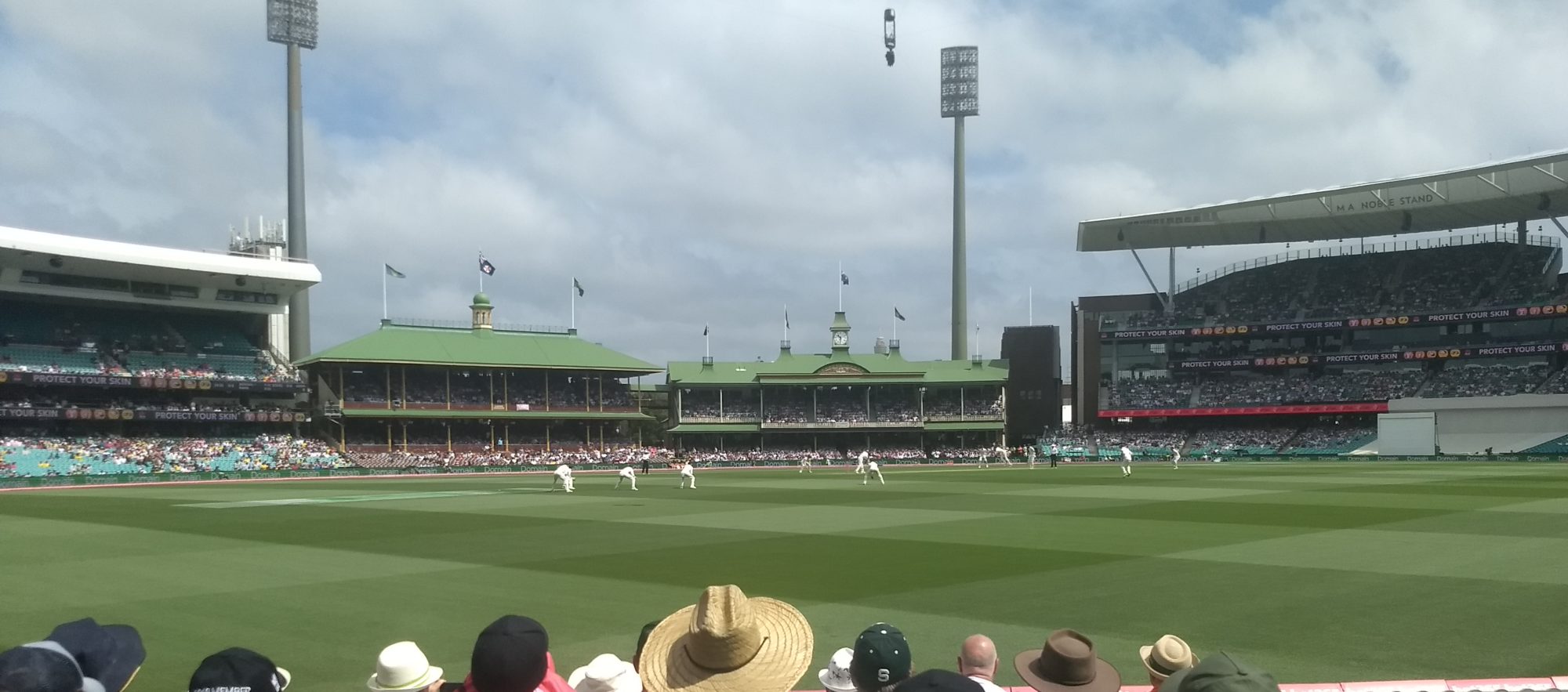There were 26,190 people at Telstra Stadium at Sydney’s Olympic Park for a Saturday night interstate cricket match. In an arena of 80,000 capacity, this was the biggest crowd to see a day’s play of a New South Wales home game in more than forty years.
They didn’t get a win – Queensland won the ING Cup game with two balls to spare and two wickets in hand – but the popular success of the evening suggests that we will see more such games taken to the former Stadium Australia in future.
It was a bold move by Cricket New South Wales to take the game away from the SCG to a venue that poses a serious commercial threat as a rival, but there is no doubt that the ground has a place as a host of the occasional one-day international, and perhaps indeed become home base for NSW one-day competition. With the olympic site being closer to the demographic centre of the Sydney metropolitan area than is the Sydney Cricket Ground, the opportunities are better for bringing families to state games at affordable prices maybe two or three times a season.
Another argument for Stadium Australia’s future as a cricket venue is the likelihood (though not officially discussed yet) that Australia and/or New Zealand will host the 2011 World Cup. Despite all this, it would, in my opinion, be wrong to shift Tests and shield games away from the SCG.
The venue is not totally ideal for cricket at this stage. The square boundaries are rather short, of similar dimensions to Adelaide Oval, and while this is good for six-hitting in the pyjama game, it is not really the optimum for first-class or Test cricket (Adelaide makes up for it with its long boundaries at each end.) Also, the surface was very sandy for yesterday’s game, the bowler’s run-ups required lots of sand filling, and the turf on the perimeters outside where the rugby rectangle is situated looked uneven and full of hastily-inserted divots.
The issues with the playing surface would, I am sure, be able to addressed in the long term if the venue became a more regular cricketing venue. In winter, the ground also hosts rugby league, rugby union and Australian rules matches, and concerts and other special events are also held there from time to time.
As for last night’s game, despite the close finish it didn’t rise to any huge heights. New South Wales captain Steve Waugh elected to bat first and the Blues made 246 all out in their fifty overs. They always gave the impression that they should have scored more. Waugh himself top scored with 48, sharing yet another valuable partnership with Simon Katich (46) worth 97 in 19 overs. Matthew Nicholson lent some excitement himself for the crowd by hitting a six which struck one of the ING logo signs on the boundary on the full, earning $50,000 for the team prize pool.
Queensland openers Jimmy Maher (48) and Stuart Law (57) got the Bulls off to a blazing start, and looked set to steer their side to a bonus-point win (ie, inside 40 overs instead of 50), but after they were both dismissed, the NSW spin duo of Stuart MacGill and Aaron O’Brien tied the scoring down dramatically. O’Brien’s left-arm spin was especially tidy as he gave up just 1/21 from his ten overs. The pace bowlers, however, were expensive for NSW, and when they returned to the attack the scoring picked up again.
It was a close thing for the last three or four overs. After the runout of Clinton Perren (75), Queensland needed 20 to win from 19 balls, but Noffke and Kasprowicz steered them to safety, requiring three in the final over.
New South Wales, who have won the last three limited-over competitions running, squandered the chance to move to second place on the competition ladder with that loss. After the game, all six teams had played six games each out of a final total of ten. The points are: Western Australia 23, Victoria 15, New South Wales 14, Queensland 13, South Australia 13, Tasmania 0.
(A crowd of 28259 saw the second day of the NSW v MCC game at the Sydney Cricket Ground on 17 November 1962.)
